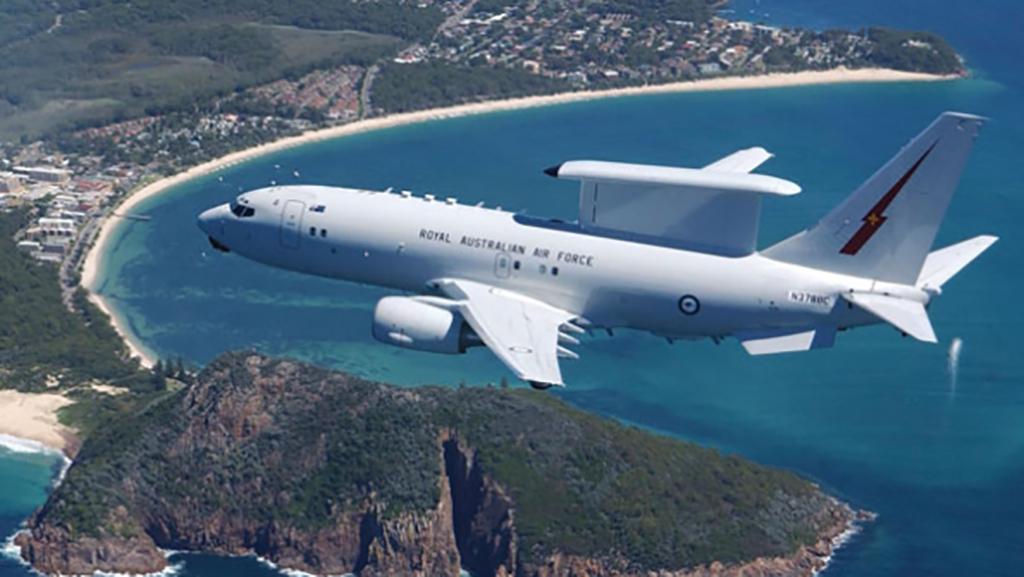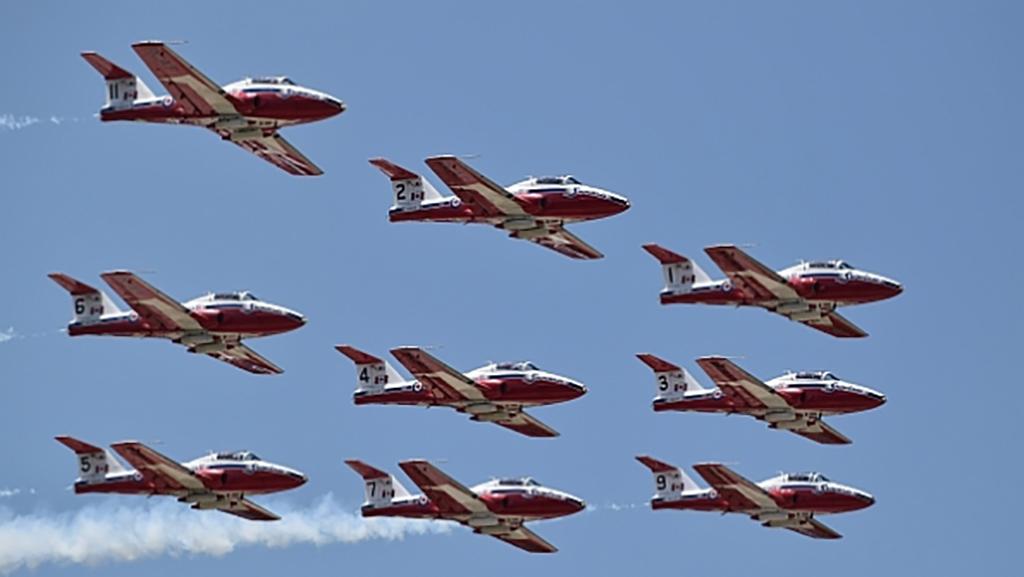
More Nasams, Himars Ammo Going to Ukraine
The Biden administration is sending Ukraine another $1 billion in aid, including ammunition for previously announced National Advanced Surface-to-Air Missile Systems (Nasams) and High-Mobility Artillery Rocket Systems (Himars).
The latest package, the 18th tranche of equipment provided under the presidential drawdown authority of Pentagon equipment, brings the total aid to Ukraine to $9.1 billion since Russia invaded the nation in late February.
In a briefing announcing the aid, Colin Kahl, undersecretary of defense for policy, said it includes an undisclosed number of AIM-120 advanced medium-range air-to-air missiles (Amraam), which are used in the Nasams. The Nasams shipment, first announced in early July, are yet to be delivered to Ukraine, and it will take a “period of time” for the inventory of Amraams to be assessed and then sent, he said.
In the briefing, Kahl also disclosed for the first time that the U.S. delivered anti-radiation missiles that can be fired from Ukrainian aircraft “that can have effects on Russian radars and other things.” Recent images posted to social media channels indicate that Ukraine has been using U.S.-made AGM-88 high-speed anti-radiation missiles on Russian targets. Kahl also said that there have been deliveries of spare parts to keep Ukrainian aircraft in the air “for a longer period of time.”
The latest package includes an undisclosed amount of Himars ammunition, which has become critical in Ukraine’s fight against Russia in the open and flat terrain of eastern Ukraine.
Other items in the latest batch include 75,000 rounds of 155mm artillery ammunition, mortar systems and ammunition, 1,000 Javelin missiles, hundreds of AT4 anti-armor systems, Claymore anti-personnel mines, 50 medical treatment vehicles, C-4 explosives and medical supplies.
—Brian Everstine in Washington
USAF Looks To Speed Up E-7A Contract
The U.S. Air Force aims to reprogram funding so that it has greater flexibility to award a prototype contract for Boeing E-7A Wedgetails in the event that a continuing budget resolution blocks starting the program on time.
Steven Wert, the Air Force Life-Cycle Management Center’s program executive officer for digital, says the service is working on a new start above the threshold reprogramming request and a continuing resolution anomaly to provide funding to begin the contract work earlier. The service’s best-case schedule would currently be a contract award in February 2023.

“We are actively working that right now, but that’s the timeline we’re on,” Wert says. “It’s just the acquisition physics of the things that we have to do to work through that process.”
If Congress does not pass an appropriations bill and instead approves a continuing resolution to keep the government funded, the Air Force would be blocked from spending on “new start” acquisitions such as the E-7A program. A reprogramming of a limited amount of funding “would give us the flexibility to potentially speed it up somewhat,” he says. “It’s not going to be a dramatic speedup, but we’re doing everything we can.”
The Air Force’s current schedule is to buy two prototypes ahead of a production decision in 2025. The service wants 22 of the Boeing 737-based aircraft, slated for an initial operational capability in 2030.
To accelerate the process, the Air Force is working closely with the Royal Australian Air Force, which started the E-7A program, and the UK Royal Air Force, which is buying three of the aircraft.
—Brian Everstine in Dayton, Ohio
Canadian Air Force Snowbird Fleet Grounded After Incident
The Royal Canadian Air Force’s CT-114 Tutor fleet is grounded as an investigation continues into an Aug. 2 mishap that damaged one of the Snowbird display team’s aircraft.
The grounding will remain in effect until an assessment of the Canadair-made, two-seat trainer jet is completed.

“We will return the fleet to flying operations when it is safe to do so and in accordance with our rigorous airworthiness program,” says Maj. Gen. Iain Huddleston, commander of the 1 Canadian Air Division.
A CT-114 pilot reported an emergency during takeoff from Fort St. John in British Columbia on Aug. 2. The pilot landed the aircraft immediately, but it was damaged. The pilot escaped injury. An investigation by the air force’s Directorate of Flight Safety is continuing.
The incident comes more than two years after a bird strike during takeoff caused a CT-114 to crash in May 2020. That pilot survived an ejection with serious injuries, but the passenger, the Snowbird display team’s public affairs officer, was killed.
Canada stopped using the type as a trainer in 2000 after nearly four decades of service, but the CT-114 has remained the aircraft flown by the display team’s 431 Sqdn.
The grounding may prevent the Snowbirds from performing in a string of scheduled air show appearances in Canada and the U.S. through October.
—Steve Trimble in Washington
Joby Signs Expanded Agility Prime eVTOL Contract
Joby Aviation has signed a $45 million expansion of its contract with the U.S. Air Force Agility Prime program.
The extension broadens military engagement on flight testing of Joby’s electric vertical-takeoff-and-landing (eVTOL) aircraft to include the U.S. Marine Corps and takes the full potential value of the contract to $75 million.

Joby has not disclosed the work that will be performed under the expanded contract but says the Marine Corps will participate in government-directed flight tests and exploration of use cases, including logistics resupply, personnel relocation and emergency medical response.
The expanded contract will allow Joby to forward-invest to derisk manufacture ahead of the launch of its commercial aerial ride-sharing service, planned for 2024, Joby Executive Chairman Paul Sciarra says. The contract will also support R&D to expand the capabilities of Joby’s eVTOL.
“Having the Marine Corps come in is an important show of confidence,” Sciarra tells Aviation Week. “The Marine Corps is a particularly discerning customer with a concept of operations that is complex and nimble in how they think about logistics and people movement.”
In December 2020, Joby became the first eVTOL developer to complete an airworthiness assessment and receive approval to operate its engineering prototype for government-sponsored flight-testing. The S4 tiltprop eVTOL made its first test flight in conjunction with Agility Prime in March 2021.
The first prototype was lost in a crash this February on a remotely piloted test flight, but the second prototype has continued to perform uncrewed tests for the Defense Department while the next “production-intent” prototype undergoes assembly at Joby’s manufacturing facility in Marina, California.
Under Agility Prime, Air Force personnel have worked with Joby to refine the flight control scheme for the S4. “Their feedback has been really valuable for us as we work to build the easiest aircraft to fly,” Sciarra says. The fly-by-wire S4 uses a unified control strategy for vertical and forward flight to simplify operation.
Joby is “relatively unique” among publicly traded eVTOL developers, he says, in having two paths to market: government and civil. These markets will use the same vehicle on similar missions, and early involvement by military customers will support eventual commercial launch, he adds.
—Graham Warwick in Washington


